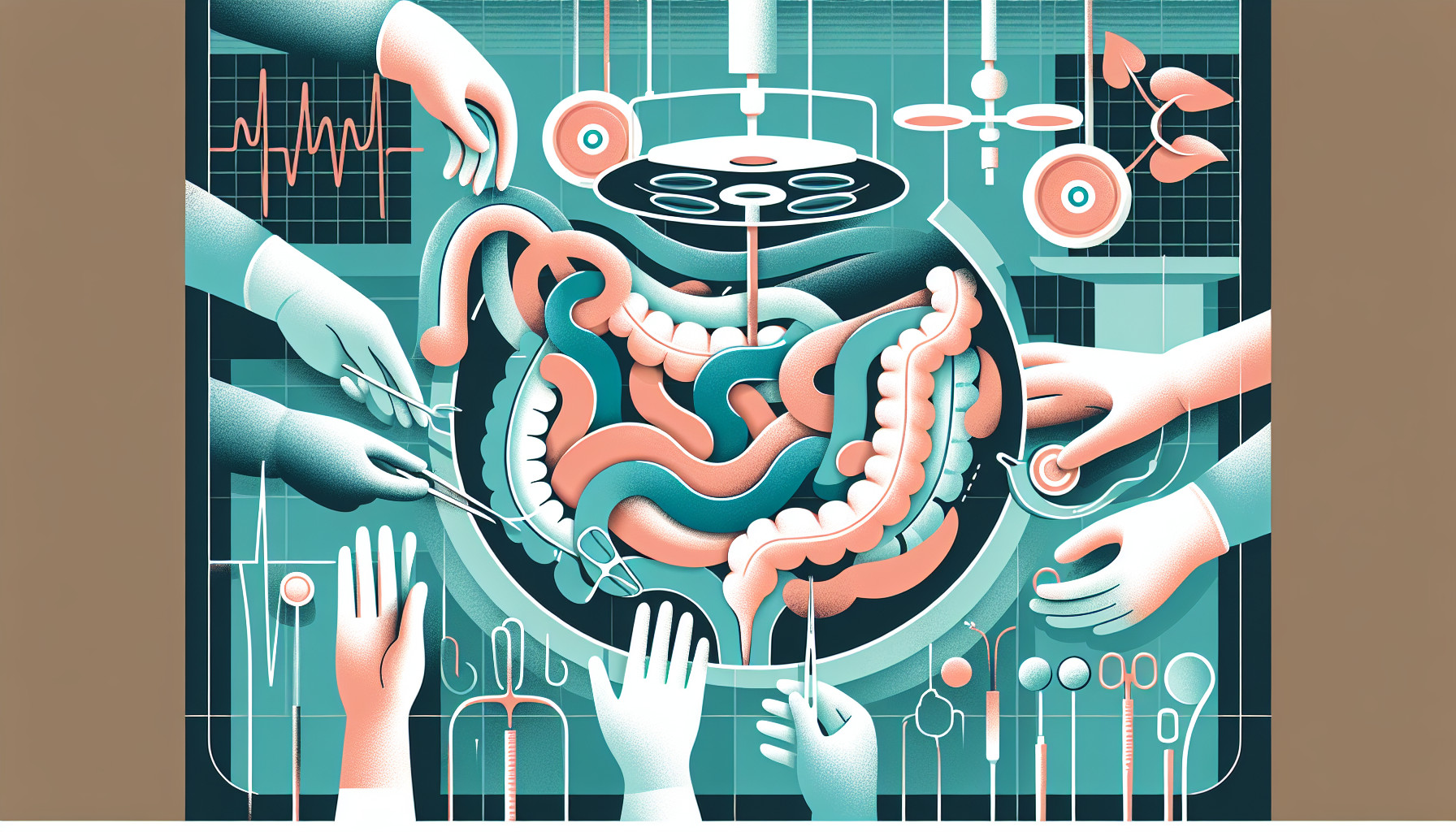Our Summary
The research paper compares the early postoperative outcomes of robotic and laparoscopic colorectal surgery. Data was taken from the American College of Surgeons National Surgical Quality Improvement Project Colectomy Targeted Dataset from 2012 to 2014. The study included adult patients who had undergone elective colectomy with an anastomosis, a procedure to connect two things.
The results showed that there was no significant difference in overall morbidity, serious morbidity, and mortality between the two surgical methods. However, patients who had robotic low anterior resection, a type of colorectal surgery, had lower conversion rates and lower rates of postoperative sepsis, a serious infection. But, this group also had a higher rate of diverting ostomy, which is a surgical procedure to create an opening in the body for the discharge of body wastes.
Robotic right-sided colectomies also had significantly lower conversion rates. In all groups, robotic colectomy was associated with a longer operation time by 40 minutes but a decreased hospital stay by half a day.
The reason for the higher rate of diverting ostomy in robotic low anterior resection is not clear, and the researchers suggest that surgeon factors, patient factors, and technical factors should be considered in future studies.
FAQs
- What were the main findings of the research paper comparing robotic and laparoscopic colorectal surgery?
- What are the advantages and disadvantages of robotic colectomy compared to laparoscopic colectomy?
- Why might there be a higher rate of diverting ostomy in robotic low anterior resection, according to the researchers?
Doctor’s Tip
A helpful tip a doctor might tell a patient about laparoscopic colectomy is to follow the postoperative care instructions carefully, including taking prescribed medications, avoiding heavy lifting, and gradually returning to normal activities as advised by the surgical team. It is important to communicate any concerns or changes in symptoms to your healthcare provider promptly.
Suitable For
Patients who are typically recommended for laparoscopic colectomy include those with colorectal cancer, inflammatory bowel disease (such as Crohn’s disease or ulcerative colitis), diverticulitis, and other conditions affecting the colon. These patients may benefit from the minimally invasive nature of laparoscopic surgery, which can lead to faster recovery times, less postoperative pain, and reduced risk of complications compared to traditional open surgery.
Timeline
Before laparoscopic colectomy:
- Patient undergoes preoperative evaluation and consultation with a surgeon.
- Patient may undergo preoperative testing such as blood work, imaging studies, and possibly a colonoscopy.
- Patient receives instructions on preoperative preparation, diet restrictions, and medication management.
- Patient undergoes laparoscopic colectomy procedure under general anesthesia.
After laparoscopic colectomy:
- Patient is monitored closely in the post-anesthesia care unit (PACU) for recovery.
- Patient may experience pain and discomfort, which is managed with pain medications.
- Patient is encouraged to start moving and walking to prevent complications such as blood clots.
- Patient is gradually advanced to a clear liquid diet and then to a regular diet as tolerated.
- Patient is discharged home with instructions on wound care, activity restrictions, and follow-up appointments.
- Patient may experience gradual improvement in symptoms, with some potential side effects such as bloating, gas, and changes in bowel habits.
- Patient undergoes follow-up appointments with the surgeon to monitor recovery and address any concerns.
What to Ask Your Doctor
Some questions a patient should ask their doctor about laparoscopic colectomy may include:
- What are the potential risks and complications associated with laparoscopic colectomy compared to traditional open surgery?
- How long will the recovery process be after laparoscopic colectomy, and what can I expect in terms of pain management and postoperative care?
- Are there any long-term effects or considerations I should be aware of after undergoing laparoscopic colectomy?
- How experienced are you in performing laparoscopic colectomy procedures, and what is your success rate with this technique?
- Are there any specific factors that may make me a better candidate for laparoscopic colectomy over open surgery?
- Will I need a diverting ostomy after the procedure, and if so, what are the implications and potential complications associated with this?
- How does the use of robotic technology in laparoscopic colectomy compare to traditional laparoscopic techniques in terms of outcomes and recovery time?
- What should I expect in terms of follow-up care and monitoring after undergoing laparoscopic colectomy?
- Are there any lifestyle changes or dietary modifications I should consider after the procedure?
- Are there any alternative treatment options to laparoscopic colectomy that I should be aware of?
Reference
Authors: Dolejs SC, Waters JA, Ceppa EP, Zarzaur BL. Journal: Surg Endosc. 2017 Jun;31(6):2387-2396. doi: 10.1007/s00464-016-5239-5. Epub 2016 Sep 21. PMID: 27655383
